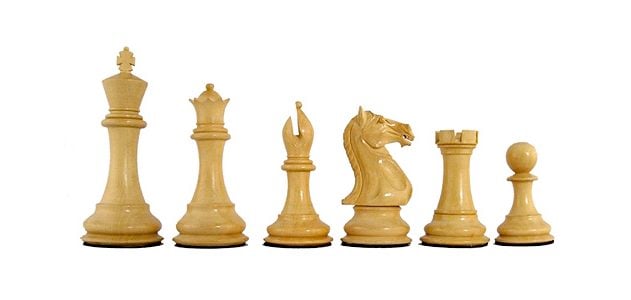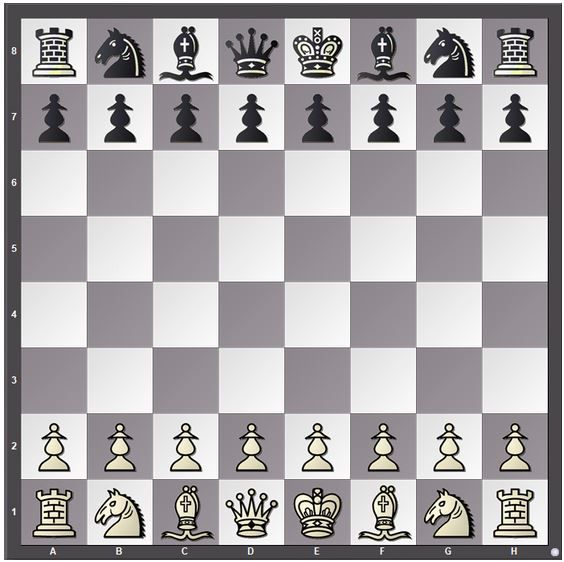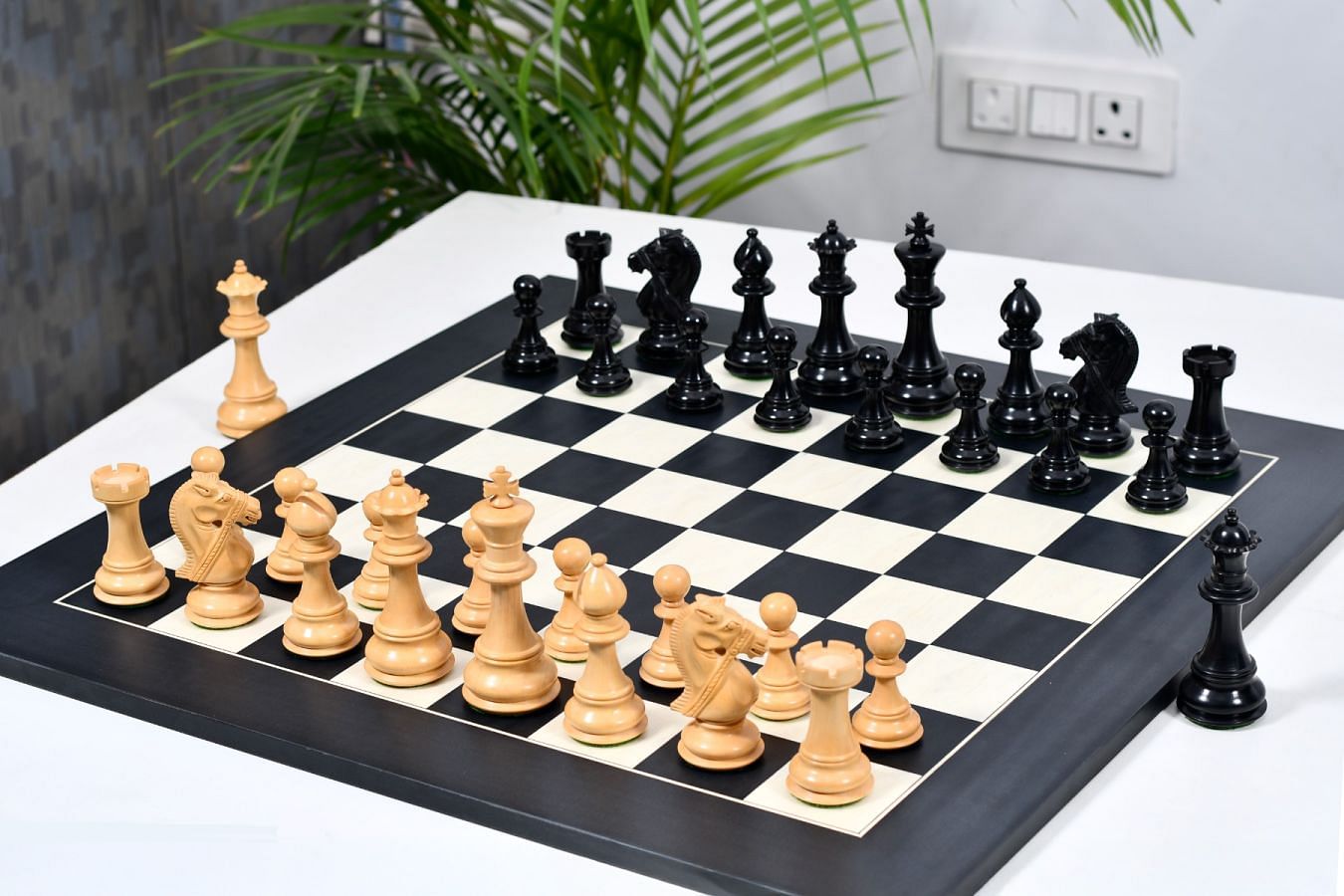The Remarkable Story of Chess from India to the World
Wiki Article
All Regarding Chess: Discover the Remarkable Background and Strategies Behind the Game
Chess, with its origins dating back to 6th century India, has transformed greatly over the centuries. This game has captivated minds worldwide, showcasing the luster of legendary players like Garry Kasparov and Bobby Fischer. Comprehending the ins and outs of chess, from the activities of each piece to essential methods, reveals its depth. Yet, the concern continues to be: what drives the withstanding attraction with this ancient game? Discovering its background and methods may discover deeper insights.The Beginnings of Chess: A Journey Through Time
The exact beginnings of chess continue to be uncertain, historical proof suggests that the game progressed from earlier approaches played in India around the Sixth century. Referred to as Chaturanga, this very early form of chess featured pieces representing infantry, mounties, elephants, and chariots, showing the army tactics of the moment. As Chaturanga spread via trade courses, it adapted to numerous societies, resulting in the creation of Shatranj in Persia. This variant introduced new rules and piece activities, laying the structure for modern-day chess.Chess Prodigies: Notable Numbers in the Game's Background
Throughout chess history, amazing prodigies have arised, shaping the game's landscape and inspiring future generations. From fabulous champions who controlled the boards in their time to modern-day abilities redefining the restrictions of young people and ability, these gamers have actually made enduring marks on the sport. Their tales highlight not only individual luster but likewise the advancing nature of chess as an affordable endeavor.Fabulous Chess Champions
Chess has actually been shaped by the sparkle of many fabulous champs whose contributions have left an enduring mark on the game. Numbers like Garry Kasparov, recognized for his vibrant style and unrivaled critical deepness, dominated the chess globe during the late 20th century. Anatoly Karpov, his opponent, showcased phenomenal positional understanding and emotional prowess, safeguarding multiple globe titles. Bobby Fischer, an American prodigy, transformed chess with his unmatched talent and extreme focus, culminating in his 1972 World Championship success. Furthermore, José Raúl Capablanca's all-natural capacity and endgame mastery set new criteria in the very early 20th century. These champions not only succeeded in competition yet likewise motivated generations, shaping chess into a worldwide phenomenon commemorated for its intellectual roughness and creativity.Modern-Day Prodigies
What makes a chess prodigy absolutely amazing? The ability to comprehend complicated strategies at an astonishingly young age establishes them apart. Modern-day chess natural born players like Magnus Carlsen, Fabiano Caruana, and Alireza Firouzja have mesmerized target markets with their phenomenal skill. Carlsen, becoming a Grandmaster at simply 13, redefined assumptions and ascended to World Champion condition. Caruana, known for his deep preparation and tactical prowess, has actually consistently challenged the elite. Firouzja, birthed in 2003, stands for the new generation, combining creative thinking with relentless passion. These players exhibit a mix of natural skill, strenuous training, and psychological perseverance, affecting the game's advancement. Their payments assure that chess stays a dynamic and lively self-control, inspiring future generations of gamers worldwide.Comprehending the Chessboard: Parts and Their Movements
The chessboard works as the battleground where complex approaches unravel, including a distinct set of pieces, each with distinctive motions and duties. Comprising 64 squares set up in an 8x8 grid, it is home to the king, queen, rooks, knights, diocesans, and pawns. The king, the most important item, moves one square in any kind of instructions, while the queen, one of the most effective, can pass through any number of squares vertically, horizontally, or diagonally. Rooks relocate straight lines, whereas diocesans glide diagonally throughout the board. Knights have a distinct L-shaped movement, jumping over various other pieces. Pawns progress one square however capture diagonally, with the choice to relocate two squares ahead on their preliminary step. Each item's activity adds to the elaborate dance of approach and techniques, making the chessboard a vibrant phase for intellectual battle. Recognizing these activities is basic for gamers intending to browse the intricacies of the game.
Necessary Approaches for Beginners: Tips to Enhance Your Game
Understanding the movements of chess items prepares for developing effective strategies. For novices, focusing on regulating the facility of the board is vital. This permits better mobility and influence over the game. Creating pieces early, rather than relocating the very same item multiple times, can help establish a strong position.In addition, gamers ought to prioritize king safety and security by castling early, making certain the king is put away from hazards. Identifying tactical possibilities, such as forks, pins, and skewers, can offer advantages in product gain. It is additionally important visit site to plan ahead; expecting an opponent's steps promotes far better defensive and offending play.
Preserving a well balanced strategy between hostile and protective strategies can protect against unnecessary oversights. By carrying out these fundamental approaches, novices can boost their gameplay and construct a solid foundation for future improvement in chess.
Advanced Tips: Elevating Your Chess Skills
In the domain of chess, mastering sophisticated techniques can greatly boost a gamer's ability. Acknowledging tactical patterns, mastering endgame approaches, and understanding opening up principles are essential elements that elevate one's game. These components not just enhance general performance but likewise foster much deeper calculated thinking.
Tactical Patterns Acknowledgment
Acknowledging tactical patterns is vital for elevating chess abilities to a higher degree. Gamers that understand these patterns can identify opportunities for tactical maneuvers, boosting their opportunities of success. Common patterns include forks, pins, skewers, and discovered attacks, each offering calculated benefits when executed successfully. Comprehending these themes enables gamers to expect their opponent's steps and counter them efficiently. In addition, studying classic video games can disclose exactly how masters utilized tactical patterns to secure victories. Normal technique and evaluation of one's very own video games can additionally strengthen pattern acknowledgment, making it possible for gamers to react promptly and accurately during matches. Eventually, developing this skill changes the technique to chess, connecting the space in between amateur and innovative play.Endgame Strategies Mastery
Effective endgame techniques can substantially affect the result of a chess match, commonly determining the distinction between a win and a draw. Advanced gamers comprehend the value of item coordination and the use of pawns in the endgame. Key techniques include advertising pawns to queens and developing passed pawns that can progress unblocked. Identifying important settings, such as the opposition and zugzwang, is important for achieving beneficial setups. Proficiency of endgame strategies, such as king and pawn versus king scenarios, can turn prospective losses right into attracts or wins. Players ought to also focus on streamlining the position when in advance, exchanging items to convert material benefits right into success. Continuous method and analysis of endgame positions will elevate a player's total chess abilities greatly.
Opening Concepts Understanding
Understanding endgame techniques lays a solid structure for comprehending opening up principles. In chess, the opening phase is essential as it sets the stage for the middle game. Chess. Players must prioritize control of the facility, developing pieces effectively, and making certain king security. Reliable openings usually include moving pawns to establish main dominance while coordinating small and significant pieces for optimal task. The concepts stress not moving the same item several times without requirement content and preventing early queen advancement, which can bring about vulnerability. By adhering to these foundational approaches, players can create a solid framework that enhances their tactical opportunities later in the game. Comprehending these opening up principles is essential for boosting one's chess abilities and achieving success
The Cultural Effect of Chess: Why It Matters Today
Chess, a game with roots mapping back over a millennium, proceeds to exert an extensive social impact throughout the world. It transcends mere home entertainment, working as a tool for education, critical thinking, and social interaction. Many schools include chess into their educational programs, advertising cognitive development and strategic reasoning among pupils. The game likewise cultivates inclusivity, uniting diverse communities and encouraging intergenerational connections.In addition, chess has actually penetrated pop culture, inspiring literary works, movies, and even fashion. Iconic figures like Bobby Fischer and Garry Kasparov have actually become social icons, illustrating the game's potential for personal and national pride. In helpful site the digital age, online systems have better democratized access to chess, enabling millions to engage with the game. As society faces complex challenges, chess stays pertinent, offering lessons in perseverance, foresight, and durability, therefore enhancing its relevance in modern society and life.
Frequently Asked Inquiries
Just How Has Chess Influenced Pop Culture and Media?
Chess has actually substantially affected preferred culture and media, showing up in movies, literary works, and art. It signifies intelligence and technique, motivating stories and characters while advertising themes of problem, competition, and the human experience.What Are the Perks of Playing Chess for Mental Wellness?

Exist Various Chess Variations Played Around the World?
Yes, numerous chess versions are played globally, consisting of Bughouse, Chess960, and Three-check chess. Each alternative introduces special regulations and approaches, giving gamers with diverse experiences and obstacles that differ from conventional chess.Exactly How Do Chess Engines and AI Influence Modern Chess?
Chess engines and AI considerably enhance modern-day chess by giving sophisticated evaluation, enhancing gamer skills, and influencing methods. They work as training devices and competition help, transforming exactly how gamers come close to the game at all levels.What Prevail Misconceptions About Chess Athletes?
Typical mistaken beliefs about chess players consist of the belief that they are all shy geniuses, entirely concentrated on strategy. Chess. In truth, gamers vary greatly in individuality, history, and approach, frequently appreciating social communications and diverse interestsReport this wiki page